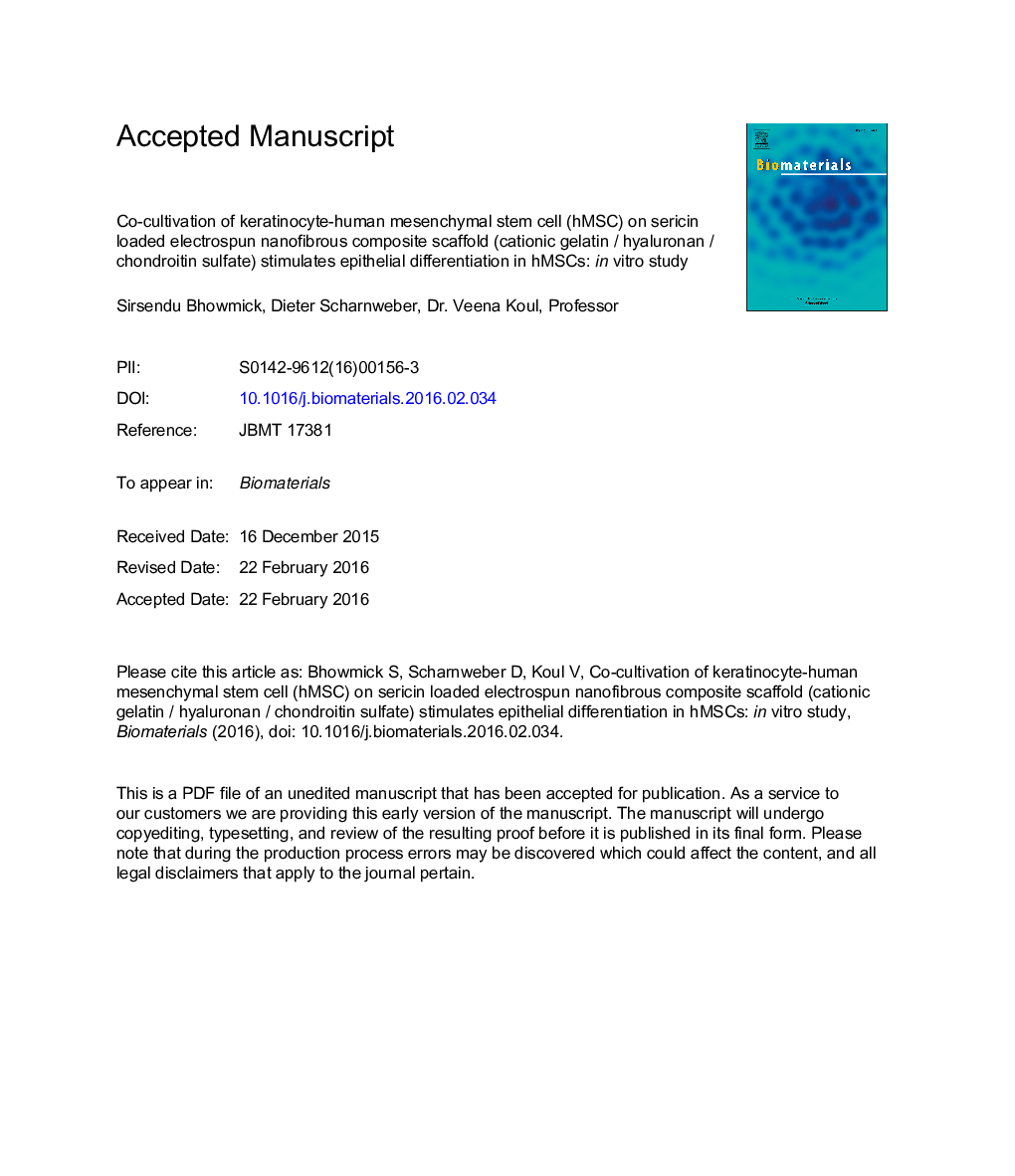| Article ID | Journal | Published Year | Pages | File Type |
|---|---|---|---|---|
| 6485018 | Biomaterials | 2016 | 37 Pages |
Abstract
Fortifying the scaffold with bioactive molecules and glycosaminoglycans (GAGs), is an efficient way to design new generation tissue engineered biomaterials. In this study, we evaluated the synergistic effect of electrospun nanofibrous composite scaffold (cationic gelatin/hyaluronan/chondroitin sulfate) loaded with sericin and, contact co-culture of human mesenchymal stem cells (hMSCs)-keratinocytes on hMSCs' differentiation towards epithelial lineage. Cationic gelatin is prepared with one step novel synthesis process by grafting quaternary ammonium salts to the backbone of gelatin. Release kinetics studies showed that Fickian diffusion is the major release mechanism for both GAGs and sericin/gelatin. In vitro biocompatibility of the electrospun scaffold was evaluated in terms of LDH and DNA quantification assay on human foreskin fibroblast, human keratinocyte and hMSC. Significant proliferation (â¼4-6 fold) was detected after culturing all three cell on the electrospun scaffold containing sericin. After 5 days of contact co-culture, results revealed that electrospun scaffold containing sericin promote epithelial differentiation of hMSC in terms of several protein markers (keratin 14, ÎNp63α and Pan-cytokeratin) and gene expression of some dermal proteins (keratin 14, ÎNp63α). Findings of this study will foster the progress of current skin tissue engineering scaffolds by understanding the skin regeneration and wound healing process.
Related Topics
Physical Sciences and Engineering
Chemical Engineering
Bioengineering
Authors
Sirsendu Bhowmick, Dieter Scharnweber, Veena Koul,
